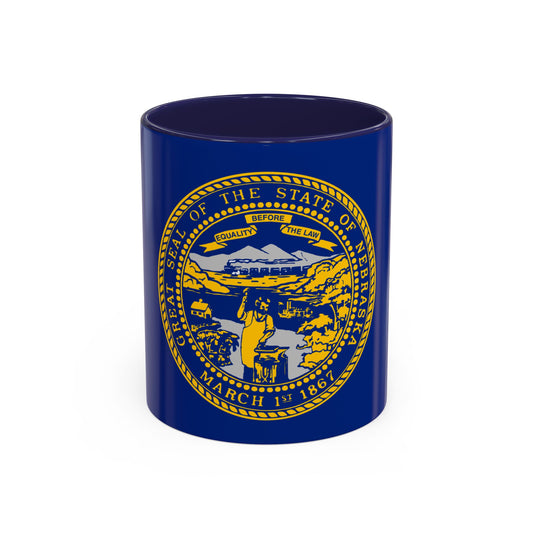-
Nebraska Backpack
Regular price $59.79 USDRegular priceUnit price / per -
Nebraska Pillow
Regular price $22.65 USDRegular priceUnit price / per -
Nebraska Mug
Regular price $11.65 USDRegular priceUnit price / per -
Nebraska Trucker Cap
Regular price $14.90 USDRegular priceUnit price / per -
Nebraska Leather Patch Hat
Regular price $18.85 USDRegular priceUnit price / per -
Nebraska Sweatshirt
Regular price $34.15 USDRegular priceUnit price / per -
Nebraska Inspired Sweatshirt
Regular price $34.15 USDRegular priceUnit price / per -
Nebraska Flag Sweatshirt
Regular price $34.15 USDRegular priceUnit price / per -
Nebraska Hoodies
Regular price $34.40 USDRegular priceUnit price / per -
Nebraska T-shirts
Regular price $22.79 USDRegular priceUnit price / per -
Nebraska Flag Hoodies
Regular price $34.40 USDRegular priceUnit price / per -
Nebraska Inspired Hoodie
Regular price $34.40 USDRegular priceUnit price / per -
Nebraska Inspired T-shirt
Regular price $22.79 USDRegular priceUnit price / per -
Nebraska Flag T-shirts
Regular price $22.79 USDRegular priceUnit price / per
Collection: US State: Nebraska NE flag
The Nebraska flag is a symbol of pride and history for the state. Its design and colors hold significance, and there are hidden secrets and protocols associated with its display. We will delve into the details of the Nebraska flag, uncovering fun facts and revealing the lesser-known aspects of this iconic state symbol.
Overview of the Nebraska Flag

The flag of Nebraska boasts a striking design that encapsulates the state's values and heritage through its use of colors and symbols. Here is a breakdown of its features:
- Background Color: A deep blue field that encompasses the entire flag, symbolizing loyalty and justice.
-
State Seal: Placed at the center, the state seal is a focal point of the design. Within the seal, you'll find:
- A steamboat in motion, representing Nebraska's historical significance in transportation and commerce.
- A golden scroll inscribed with the state motto "Equality Before the Law" highlights Nebraska's commitment to this foundational principle.
The simplicity of the flag's design belies its depth of meaning, connecting the past with the present and symbolizing the enduring spirit of Nebraska.
Historical Context of the Flag
Adopted in 1925, the Nebraska flag was introduced when the state sought to establish a stronger sense of identity and unity among its residents. This period was significant for Nebraska, reflecting a broader movement across the United States where states aimed to represent their unique attributes and principles through official banners visually. Before the flag's adoption, Nebraska was one of the few states without a designated state flag, relying instead on the national flag to represent it at official events.
The process leading up to the selection of the flag's design involved considerable debate and discussion among state officials, historians, and citizens. Placing the state seal on a blue field was ultimately seen as a way to emphasize Nebraska's values and aspirations. Notably, the flag remained the same since its initial adoption, a testament to the enduring nature of its symbolism and the importance of tradition to the people of Nebraska.
The adoption of the flag marked a pivotal moment for Nebraska. It served as a tangible symbol of the state's progress and its hopes for the future. Over the years, the flag has become integral to Nebraska's cultural landscape, flown proudly at schools, government buildings, and historical landmarks throughout the state.
Symbolism Embedded in the Flag
The symbolism of the Nebraska flag is deeply rooted in the state's history and values. The prominent blue background represents not just loyalty and justice but also the vast Nebraska sky that covers the state's varied landscapes. Central to the flag, the state seal encapsulates significant symbols of Nebraska's heritage and aspirations.
Within the seal, the blacksmith with his anvil and the settler's cabin amidst wheat sheaves portray the importance of agriculture and industry to Nebraska's economy and culture, acknowledging the hard work and pioneering spirit of its people. The steamboat, churning through the waters, signifies Nebraska's historical connection to river commerce and the vital role of transportation in the state's development. This, combined with the locomotive and the mountains in the background, suggests Nebraska's aspirations' progress and expansive nature.
Furthermore, the state motto, "Equality Before the Law," boldly inscribed on a banner, is a powerful reminder of Nebraska's commitment to justice and equality for all its citizens, reflecting core American values. The circlet of 37 stars surrounding the seal represents Nebraska's position as the 37th state to join the Union, a symbol of pride and unity.
Each element of the Nebraska flag, from its colors to the intricate details within the state seal, is imbued with meaning. It crafts a narrative of Nebraska's past, its values, and its ongoing journey into the future.
Current Relevance of the Flag
Today, the flag of Nebraska continues to hold a significant place in its citizens' hearts, symbolizing the state's unity and shared heritage. It is prominently displayed during national celebrations, military honors, and other ceremonious events, reaffirming its role as a beacon of state pride. Yet, the flag has not been immune to discussions on its contemporary significance. Critics argue its design could be modernized better to reflect the diverse and evolving identity of Nebraska.
This ongoing debate highlights the dynamic relationship between tradition and progress within the state. Additionally, initiatives and proposals for redesign have sparked conversation among Nebraskans, reflecting a vibrant civic engagement with the flag's future role in representing the state's values and aspirations. Despite differing viewpoints, the Nebraska flag remains a powerful emblem of state identity, embodying its people's rich history and collective spirit.
Additional Facts and Protocols
Displaying and handling the Nebraska flag comes with its own set of unique protocols that ensure its dignity and respect are maintained. When flown alongside the U.S. flag, it is positioned to the latter's left when facing the display, signifying its adherence to the protocol that the national flag takes precedence. If arranged indoors, the Nebraska flag should find its place to the speaker's right, mirroring the position of importance.
One of the lesser-known facts about the Nebraska flag involves its care and presentation: it should never touch the ground. It should be illuminated if flown at night, reflecting the reverence held for this state symbol. During inclement weather, the flag is only flown if it is an all-weather flag, underscoring the care taken to preserve its condition.
An intriguing anecdote surrounding the Nebraska flag is its occasional misplacement or upside-down display due to the complexity of its seal and the flag's overall simplicity. This has led to calls for a redesign to prevent such mishaps and potentially modernize the flag's appearance.
Moreover, contrary to popular belief, the flag's design process and adoption did not involve competition or the direct input of a school student. This misconception highlights the many myths and tales that have grown around state symbols, adding layers of folklore to their factual histories. These protocols and stories add a rich texture to the understanding of the Nebraska flag, weaving it more deeply into the state's cultural tapestry.




























